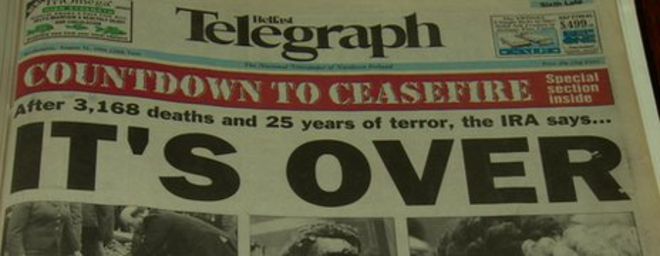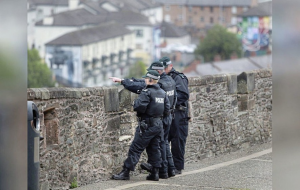For more than half of the 20th century, violent conflict between pro-British Unionists and Irish Nationalists – a period referred to as the Troubles – decimated communities across British-controlled Northern Ireland and the self-governing Republic of Ireland.
Violence even occasionally spilled over into England itself. In counties bordering Northern Ireland and the Republic, violence was an everyday phenomenon. Crossing the border often proved a fateful endeavor. Much of the violence was driven by the IRA, or Irish Republican Army, an organization determined to end British rule of Northern Ireland and restore political autonomy to all of Ireland’s 32 counties.
Though their aim was noble, they used violence – including bombings, kneecappings, and violent intimidation – to achieve it.
At the height of IRA violence, their bloody campaign instilled terror in the Irish people, claiming hundreds of innocent lives. Irish people with relatives in Northern Ireland, like my grandparents, were thwarted from communicating with or visiting family across the border. Crossing in the wrong sort of car, or entering the wrong neighborhood would guarantee harm at the hands of violent nationalists. Things carried on this way for half a century.
If the IRA was so powerful, why has it ceased to be a source of violence in the 21st century? After declaring a ceasefire in 2005, the IRA lost its status as a major Irish political player. The IRA’s r reasons for disarming are complex, but they are entwined with events outside of Ireland, surprisingly.
It’s not too much to suggest that Irish-Americans were complicit in the deaths of hundreds of Irish civilians.
Irish-American support buoyed the IRA throughout its history, even as its leadership faltered, and its mission’s clarity flagged. IRA allies across the Atlantic ranged from middle-class Americans of Irish descent to Irish expatriates, and even to high-ranking members of the US Congress. Such ideological and financial support held powerful sway over IRA activities.
Preceding a 1970s crackdown, these were the IRA’s primary sources of funding. As such, Irish-American sentiment had a clear connection to IRA tactics. For decades, this informal Irish American lobby aided and abetted the IRA’s bloody pursuit of independence. It’s not too much to suggest Irish-Americans were complicit in the deaths of hundreds of Irish civilians.
9/11 reminded Irish-Americans how painful terrorism is.
The 1990s and early 2000s brought about an ideological shift. After decades of support, an increasing number of Irish-Americans shunned violence in favor of peaceful, political negotiations. 9/11 reminded Irish-Americans how painful terrorism is.
The US government arrested a number of IRA operatives trafficking weapons on American soil. And three IRA bombers were arrested in Colombia while training FARC rebels to fight US forces. These developments turned Irish-American opinion against the IRA’s use of terrorism and support for the group waned.
As the IRA lost American funding and connections, the pressure to disarm mounted. The loss of the Irish-American street wasn’t the only consideration in the IRA’s disarmament, but it surely factored into the 2005 decision.
These are not bygone days we’re discussing. These shifts occurred in the 21st century, and as such the implications are profound. Foreign support was crucial to the IRA’s survival. Likewise, it is integral to the operations of terrorist organizations like ISIS and Latin American cartels. Foreign support comes from individual donors, government agencies, and front charities. Even Bitcoin has become a means of financing extremism as terrorist organizations increase their reach and diversify their resources. Foreign money and connections are used for weapons, education, outreach. Absent these resources, all these activities would be limited.
Undermining terrorism by cutting off foreign support is demonstrably effective. If we’re serious about ending radicalism, we must penalize overseas supporters as ardently as we oppose terrorists themselves.
The War on Terror tends to focus on terrorist recruitment, disarmament, and direct combat. But it must also address the connections terrorist organizations have to secondary agencies funding them. In the case of the IRA, by cutting off foreign support was demonstrably effective.
If we’re serious about ending radicalism, we must penalize its overseas supporters as ardently as we oppose terrorists themselves. This works, whether the supporters are Saudi officials, European civilians, or members of the Irish-American middle class.




